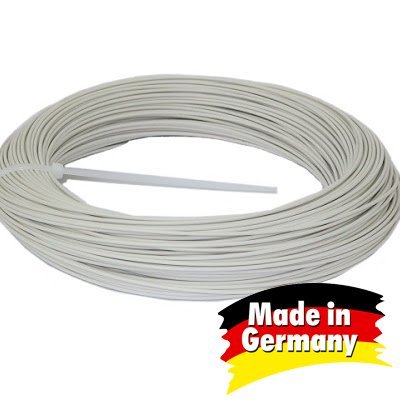Sandstone Filament: Properties, How to Use Them, and Best Brands
If you have read our previous articles on composite filaments, you should be familiar with all the unique prints you can make with materials such as carbon fiber, stainless steel, and wood. Sandstone filaments are yet another one of these exotic materials. What can you do with sandstone filaments and how do you use them? In this article, we tell you just what you need to know to get started with these nifty sandstone filaments.
What are sandstone filaments?
Similar to other composite filaments, sandstone filaments are made by infusing PLA with a very fine powdered solid. In this case, this powdered solid is in the form of very fine milled chalk. Prints made from sandstone filaments simulate the look of sandstone or ceramic, depending on how they are printed and finished.
Although technically the term ‘sandstone’ can refer to a broad group of rocks composed of sand-sized particles, it is used in this context to refer to the overall finish or look of the final prints made from the specialty filament. Chalk, also known as limestone or calcium carbonate, technically is not a sandstone but is a practical material for this application. It is a lightweight and sturdy material that is quite resistant to weathering and can be ground down to a powder-like consistency.
Sandstone filaments can be used to make prints with a rock-like finish, a nice deviation from the polished look of prints made from other composite materials. The gritty finish of sandstone prints is perfect for interesting design pieces and architectural models. You probably won’t be the next Michelangelo, but at least you will not have to hammer and chisel your work of art.
How do you use sandstone filaments?
Sandstone filaments have the unique characteristic of being able to make prints with different surfaces depending on the printing temperature. According to the guidelines for the LAYBRICK brand of sandstone filaments, printing at around 165 °C results in a smoother finish while printing at around 210 °C results in a much rougher surface. This is a very interesting property, and we are quite curious about trying to print between these two temperatures to get just the right finish for a particular job.
There are no recommended printing speeds for sandstone filaments, but we have been able to get good results at a 60 mm/s setting. We recommend an initial setting of 50 mm/s, from which you may try working your way up until you observe an unpleasant degree of stringing.
A heated bed is not a necessity when printing using sandstone filaments, although you may set a temperature of about 50 °C should you be using one. Standard blue painters’ tape works really well for adhesion in a non-heated bed. Since the filament is PLA-based, any method of bed adhesion commonly used for PLA should work well enough with sandstone filaments.
The composite material is relatively heavier because of the powdered solids fused into the plastic, so we recommend speeding up the cooling process to strengthen the print as soon as possible. You may use a cooling fan at maximum setting when printing with sandstone filaments and ensure that the print bed is not enclosed to any degree.
Prints made from sandstone filaments can be finished in several creative ways. Like real stone carvings, sandstone prints can be sanded to achieve a smooth and consistent finish. Sanding also makes subsequent treatment compounds, such as paint, easier to adhere.
What are the benefits and limitations of sandstone filaments?
The main benefit of sandstone filaments is that they are a niche product: there is no other filament product in the market right now that can be used to make prints with a stone-like finish. If this is the type of finish you are going for in your 3D print, then you literally have no option but to use sandstone filaments. That being said, the aesthetics of sandstone prints is quite excellent.
The unique capability of sandstone filaments to create different finishes in the print based on the printing temperature definitely opens up avenues in creativity that other filaments cannot provide. Printing at low temperatures results in a finish that is very smooth, almost like ceramic. At higher temperatures, prints come out with a more layered and uneven finish, which also has character and may be desirable for some applications.
As with other composite filaments, sandstone filaments have very low tendency to warp or shrink. This makes it a very easy material to work with, as you need not worry about the effects of rapid cooling or fast extrusion.
Much has been written about the abrasiveness of composite filaments, which makes it necessary to upgrade to a hardened nozzle or to use a nozzle with a wider diameter. Sandstone filaments are much less abrasive compared to stainless steel or carbon fiber, primarily due to the soft nature of chalk and the finer chalk particles present in the filament. However, the mere presence of powdered solids in the filament will accelerate the wear and tear on a standard brass nozzle. We still recommend using a nozzle with a diameter of 0.5 to 0.6 mm. This will serve not only to decrease the effect of abrasion to the nozzle, but will also lessen the chances of clogging,
Probably the biggest challenge you will encounter when working with sandstone filaments is ensuring that the filament does not snap in the middle of the print. The filament itself is quite brittle and can be broken off with minimal effort. It is crucial to ensure that the path that the filament takes from the spool to the extruder is free of sharp turns which the brittle filament cannot negotiate without breaking.
Another drawback you will likely encounter with sandstone filaments is the fact that they can be quite expensive. They are not very hard to work with, so hopefully you will not end up wasting the filament.
What are the best brands of sandstone filaments available today?

There really is only one brand of sandstone filament that has achieved any degree of popularity. The LAYBRICK brand has pretty much cornered the market on sandstone filaments and has received very good feedback from 3D printing enthusiasts with different levels of experience. The LAYBRICK sandstone filament is a very easy material to work with since it has a wide range of printing temperatures and has almost zero warp. The filaments are available in both 1.75 mm and 2.85 mm diameters, and are only sold in 0.25 kg spools.
The final word
| Material | Sandstone filament |
| Properties | – Rigid and brittle – Lightweight – Results in a rock-like or ceramic-like finish |
| Applications | – Architectural models – Design and display items |
| Recommended printing temperature | 165 to 210 °C, depending on desired finish |
| Recommended bed temperature | Heated bed is not required, but a temperature of 50 °C can be set if the bed is heated |
| Bed adhesion | Standard blue painters’ tape |
| Printing speed | 50 mm/s to 60 mm/s |
| Cooling | Cooling fan at maximum setting is recommended |
We have to admit that sandstone filaments probably are not for everybody. They fulfill very specific needs and are a little too expensive for casual use. However, it is a fun and unique material to work with. Unlike other composite materials, working with sandstone filaments is quite easy since it is less abrasive, does not warp, and performs well over a broad range of printing temperatures. Should you have the inclination, you can make some very interesting projects with this niche filament.



